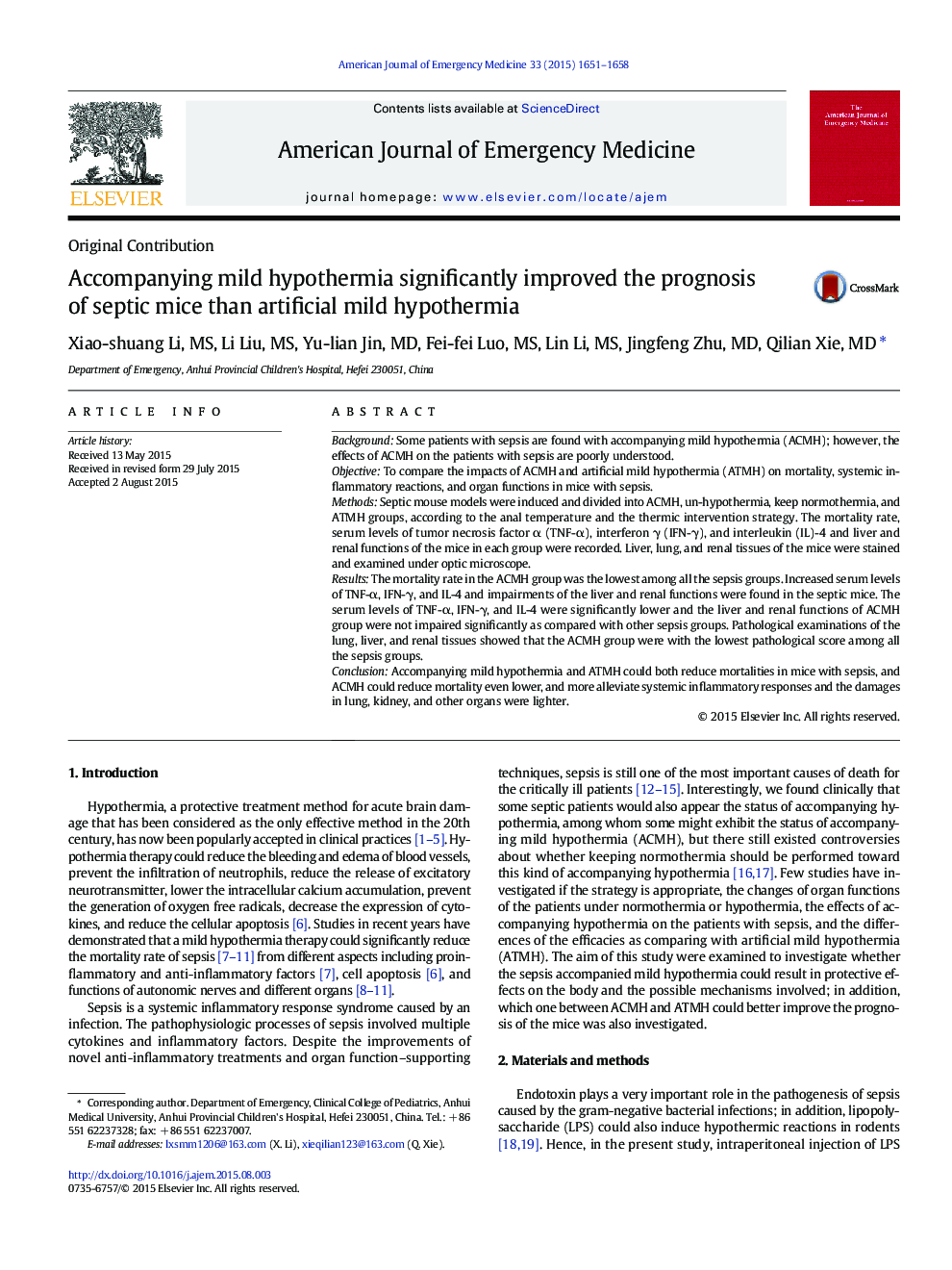| Article ID | Journal | Published Year | Pages | File Type |
|---|---|---|---|---|
| 3223655 | The American Journal of Emergency Medicine | 2015 | 8 Pages |
BackgroundSome patients with sepsis are found with accompanying mild hypothermia (ACMH); however, the effects of ACMH on the patients with sepsis are poorly understood.ObjectiveTo compare the impacts of ACMH and artificial mild hypothermia (ATMH) on mortality, systemic inflammatory reactions, and organ functions in mice with sepsis.MethodsSeptic mouse models were induced and divided into ACMH, un-hypothermia, keep normothermia, and ATMH groups, according to the anal temperature and the thermic intervention strategy. The mortality rate, serum levels of tumor necrosis factor α (TNF-α), interferon γ (IFN-γ), and interleukin (IL)-4 and liver and renal functions of the mice in each group were recorded. Liver, lung, and renal tissues of the mice were stained and examined under optic microscope.ResultsThe mortality rate in the ACMH group was the lowest among all the sepsis groups. Increased serum levels of TNF-α, IFN-γ, and IL-4 and impairments of the liver and renal functions were found in the septic mice. The serum levels of TNF-α, IFN-γ, and IL-4 were significantly lower and the liver and renal functions of ACMH group were not impaired significantly as compared with other sepsis groups. Pathological examinations of the lung, liver, and renal tissues showed that the ACMH group were with the lowest pathological score among all the sepsis groups.ConclusionAccompanying mild hypothermia and ATMH could both reduce mortalities in mice with sepsis, and ACMH could reduce mortality even lower, and more alleviate systemic inflammatory responses and the damages in lung, kidney, and other organs were lighter.
